By Tyler Russell
Have you ever thought to yourself, “What kind of training can increase my muscular strength, my performance, and help with injury prevention”? Well the answer is plyometric training. NSCA defines plyometric training, also known as jump training, as a form of conditioning aimed at creating controlled impact, maximum power, and is used primarily by athletes. Plyometric training can also be used by an average person who wants to increase performance in the areas mentioned earlier. Plyometric training not only can help with sport performance for athletes but can also increase in an individual’s performance at their work place as well. Plyometric training conditions the body with dynamic resistance exercises that rapidly stretch a muscle which is the eccentric phase and then rapidly shorten the muscle which is the concentric phase. Hopping and jumping exercises, for example, subject the quadriceps to a stretch-shortening cycle that can strengthen these muscles, increase vertical jump, and reduce the force of impact on the joints. Plyometric training was first developed in the 1970’s by state sports trainers in the former East Germany, it’s based on scientific evidence showing that the stretch-shortening cycle prompts the stretch of muscle and improves the power of muscular contraction. If performed correctly and proper progression is made plyometric training can also increase an individual’s balance due to the increase in muscular strength and muscular balance and this can lead to a decrease in injuries that may occur in sports and in everyday life activities. But plyometric training also comes with some risks, including a risk of injury, especially in participants who do not have adequate strength to begin with. So if you are considering plyometric training, it is important to consult with a qualified exercise scientist who can assess the appropriateness of a plyometric training program, and then select a qualified trainer, preferably one with a degree, who can gradually introduce you to more difficult exercises.
Example plyometric exercises
Overhead Throws
1. Stand with one foot in front (staggered stance) with knees slightly bent.
2. Pull medicine ball back behind head and forcefully throw ball forward as far as possible into the wall.
3. Catch ball on the bounce from the wall and repeat according to prescribed repetitions. Keep the time between pulling the ball back and starting the throw (transition phase) to a minimum. Can also be completed with a partner instead of a wall.
Squat Throws
1. Stand with feet slightly wider than hip-width apart. Knees should be slightly bent.
2. Hold medicine ball at chest level and squat down to a parallel position.
3. Quickly explode up and jump as high as you can. As you start your jump you should start to shoulder press the ball up and reach full extensions with the arms when you are at the peak of your jump. Push ball as high as possible into the air. Try to minimize the time spent in the squatted position. It should be a quick squat and jump.
4. Catch ball on the bounce and repeat according to prescribed repetitions.
Jump to Box
1.Stand facing box with feet slightly wider than hip-width apart.
2. Lower body into a semi-squat position and immediately jump up onto box. Do not hold a squat position before jumping up keep the time between dipping down and jumping up to a minimum.
3. Feet should land softly on box. Step back down (not jump back down) and repeat.
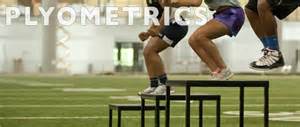
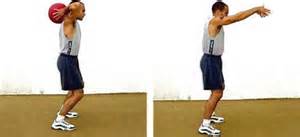
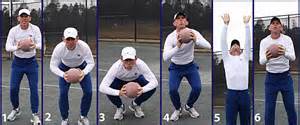
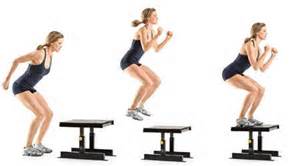

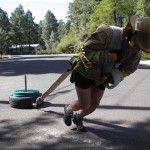
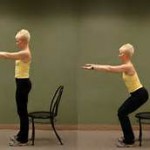 easier. For example, performing normal chair squats while holding a medic ball could directly transfer to picking up a bag of groceries off the floor and setting them of the kitchen counter.
easier. For example, performing normal chair squats while holding a medic ball could directly transfer to picking up a bag of groceries off the floor and setting them of the kitchen counter.
